How to Move My Documents Folder in Windows 10
On Windows 10, each account has a set of default folders that allow users to save and organize their files, including documents, pictures, downloads, and other data on the device.
However, over time, depending on your usage, the folders can grow in size significantly, and if you have a computer with limited storage using a different location (for example external hard drive or partition) can help to avoid running out of space on the system drive, which can be an issue when it comes the time to install new releases of Windows 10 or a new application. Also, you never want to use a device with a drive at capacity as it can affect system performance.
In this Windows 10 guide, we'll walk you through the steps to move the default user account folders to a different drive or partition.
Shop Cyber Monday deals at: Amazon | Walmart | Best Buy | Microsoft | Dell
How to change default user folders on Windows 10
To move the default user account folders to a new storage location, use these steps:
- Open File Explorer.
- Click on This PC from the left pane.
- Under the "Devices and drivers" section, open the new drive location.
- Navigate to the location you want to move the folders.
- Click the New folder button from the "Home" tab.
-
Name the folder Documents.
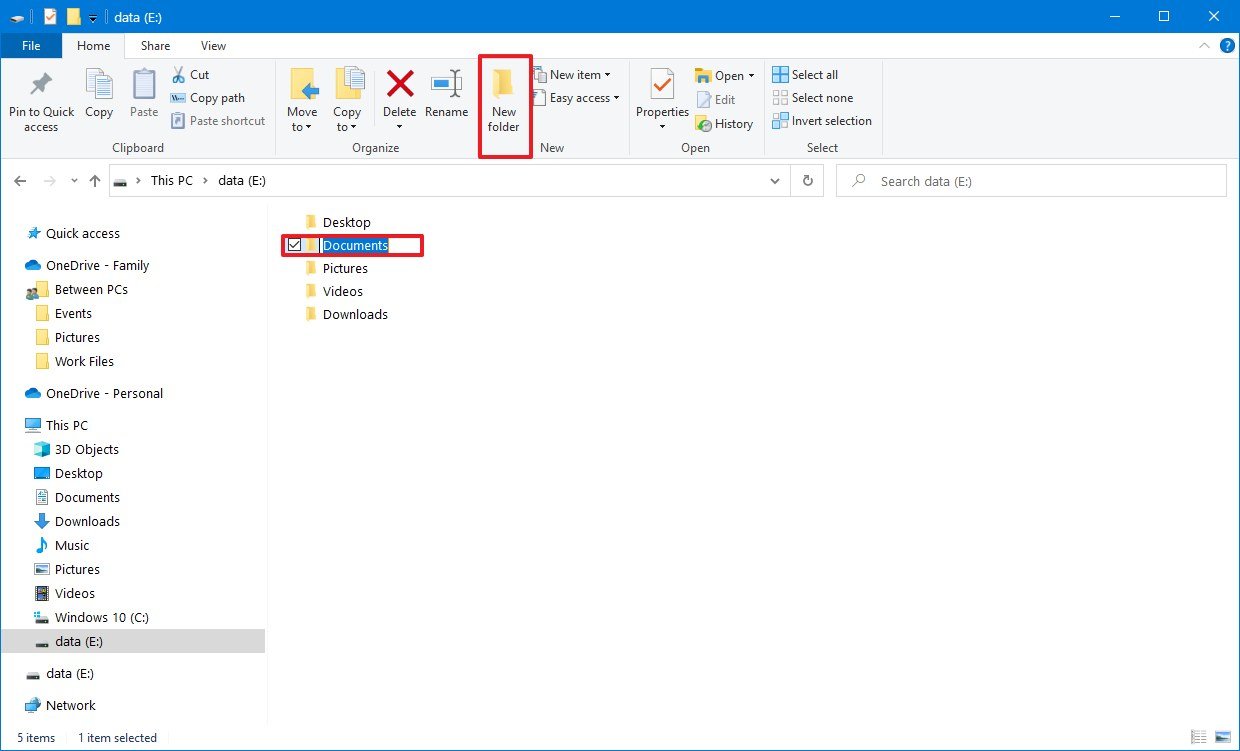 Source: Windows Central
Source: Windows Central -
Repeat steps No. 5 and 6 to create remaining folders. For example, Desktop, Downloads, Pictures, Videos, and Music.
Quick tip: You can also use the Ctrl + Shift + N keyboard shortcut to create new folders more quickly.
- Open Start.
- Search for Run and click the top result to open the Run command.
-
Type the following path to open the location with the account default folders and click the OK button:
%HOMEPATH%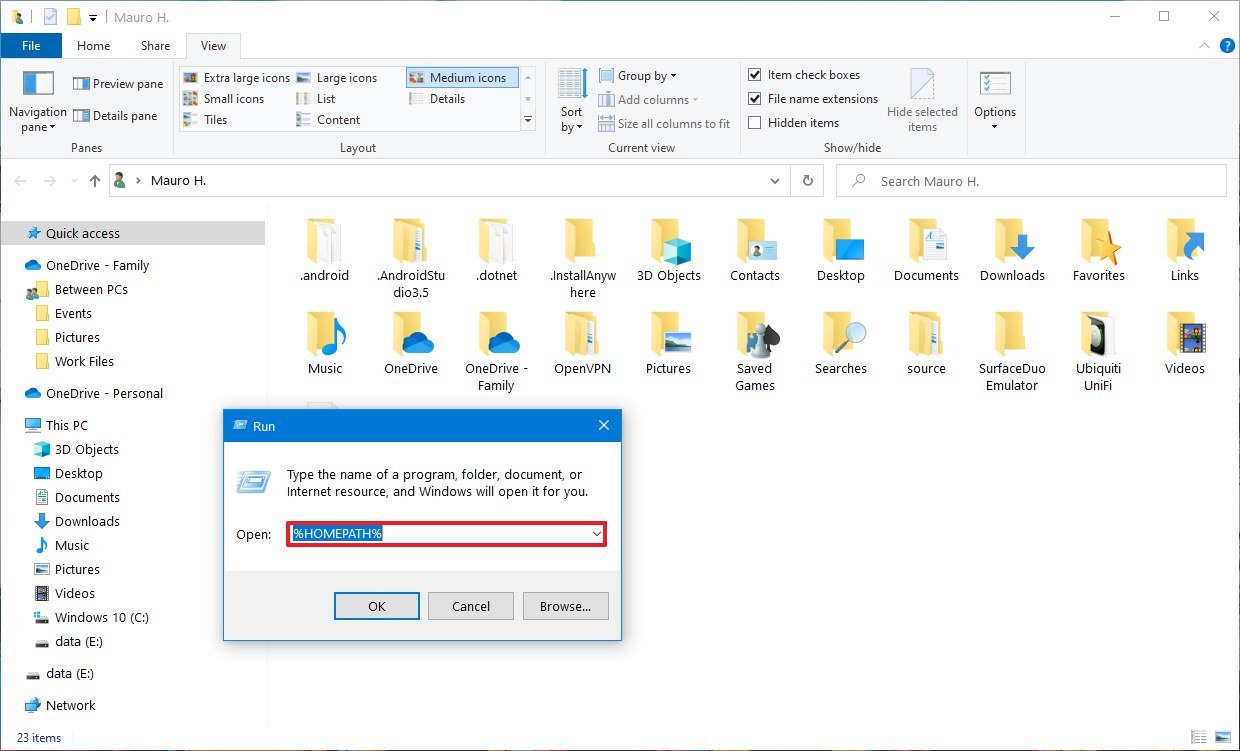 Source: Windows Central
Source: Windows Central -
Right-click the folder you want to move and select the Properties options.
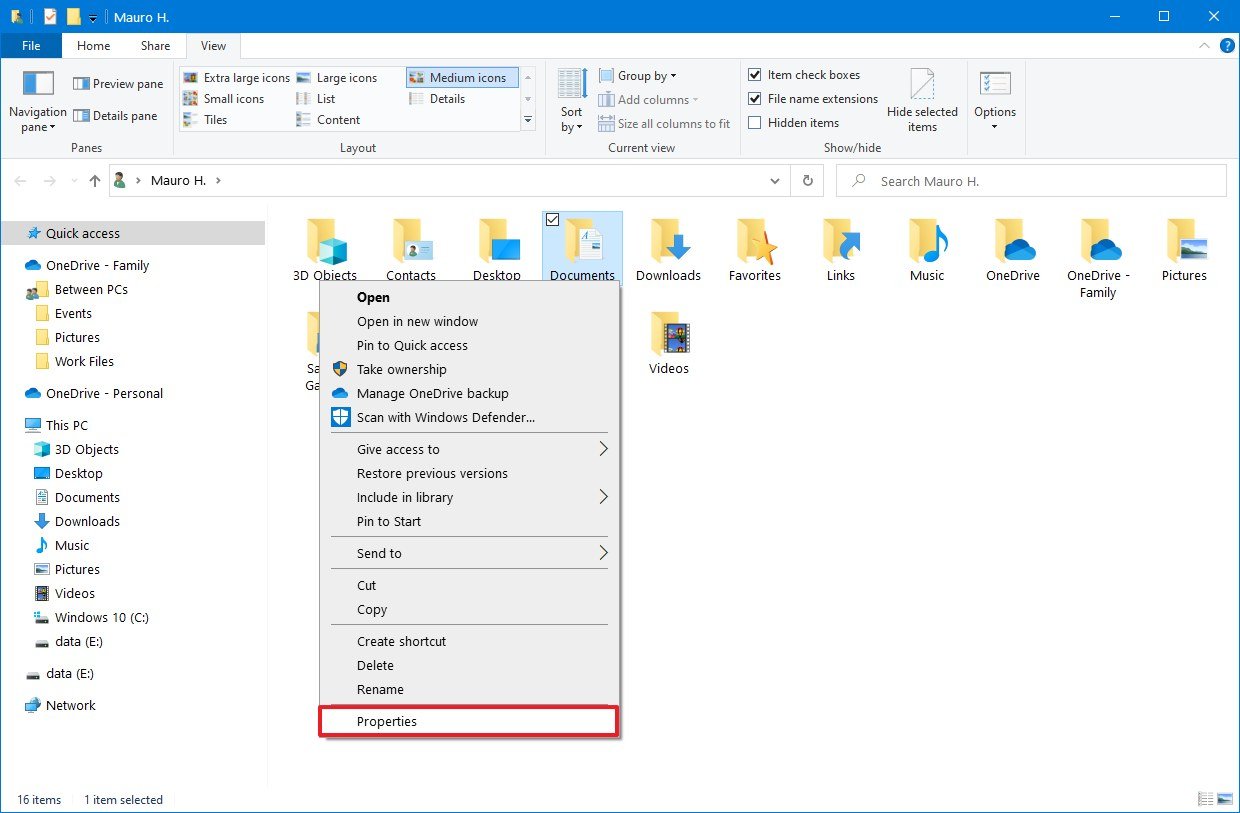 Source: Windows Central
Source: Windows Central - Click the Location tab.
-
Click the Move button.
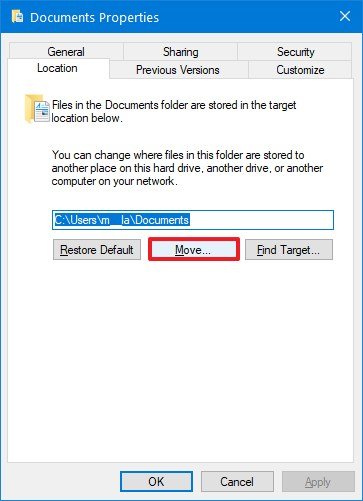 Source: Windows Central
Source: Windows Central - Select the equivalent folder in the new location.
-
Click the Select Folder button.
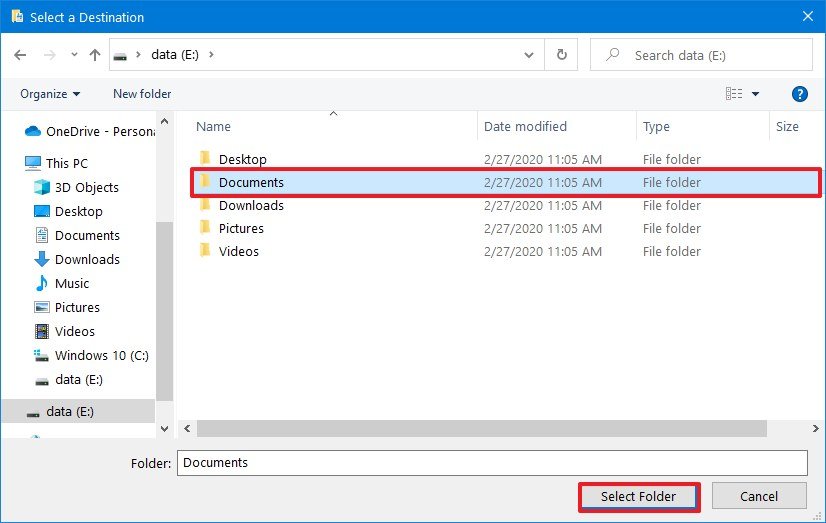 Source: Windows Central
Source: Windows Central - Click the Apply button.
-
Click the Yes button.
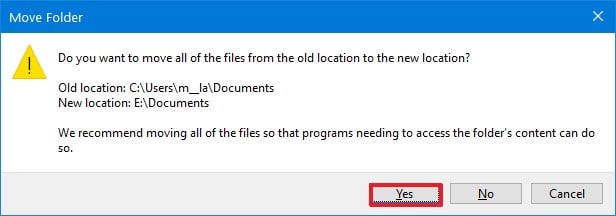 Source: Windows Central
Source: Windows Central - Click the OK button.
- Repeat steps No. 11 through 18 to move the remaining folders.
Once you complete the steps, the default account folders will move to the new location, and future files will save in this location by default.
Although moving folders one at a time introduces additional steps, you'll avoid potential problems, which may be something that could happen while moving the main account folder.
Restoring default folder location
If you change your mind, you can revert the changes for the folder location using these steps:
- Open File Explorer.
- Navigate to the current user folders location.
-
Right-click one of the folder you want to restore its location and select the Properties option.
 Source: Windows Central
Source: Windows Central - Click the Location tab.
-
Click the Restore Default button.
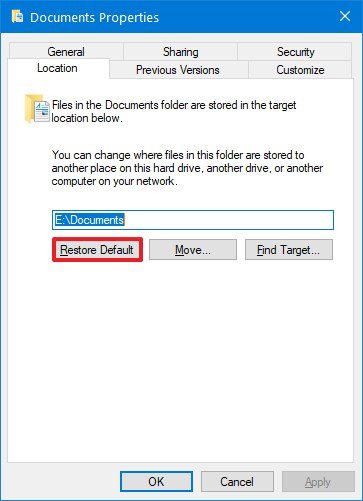 Source: Windows Central
Source: Windows Central -
Click the Yes button.
 Source: Windows Central
Source: Windows Central -
Click the Yes button to move the files to the orginal default location.
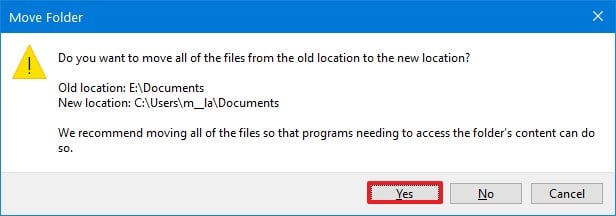 Source: Windows Central
Source: Windows Central
After you complete the steps, the account folder will relocate to its original location. You may need to repeat the steps to restore the remaining folders to their previous location.
Changing default save location on apps
The only caveat about this process is that it'll not change the default save locations for some apps. For example, if you use the Edge, Chrome, or Firefox, these browsers will continue to use the original path to try and save files.
If you want to avoid problems, it's recommended to change the default save location for these and other apps (if applicable). Here's an example changing the settings on Microsoft Edge:
- Open Microsoft Edge.
- Click the three-dotted (menu) button from the top-right.
-
Select the Settings option.
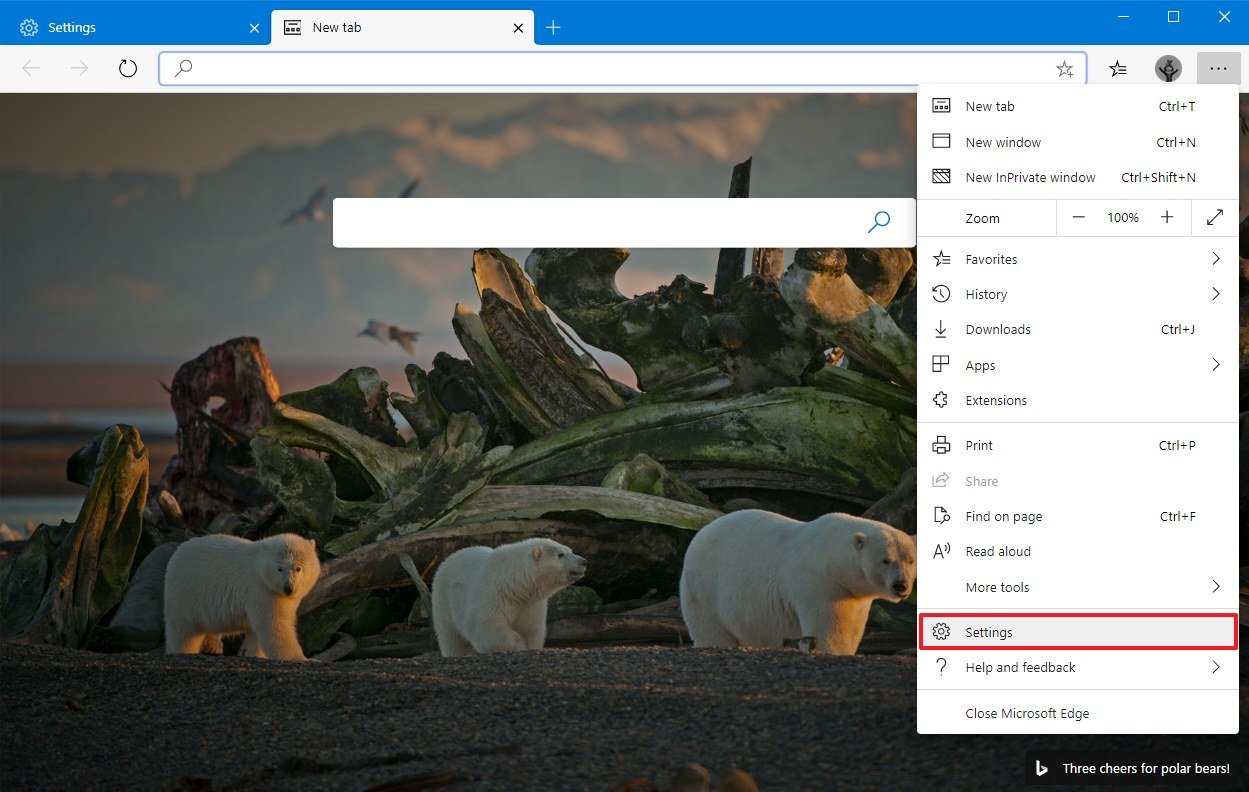 Source: Windows Central
Source: Windows Central - Click on Downloads.
-
Click the Change button.
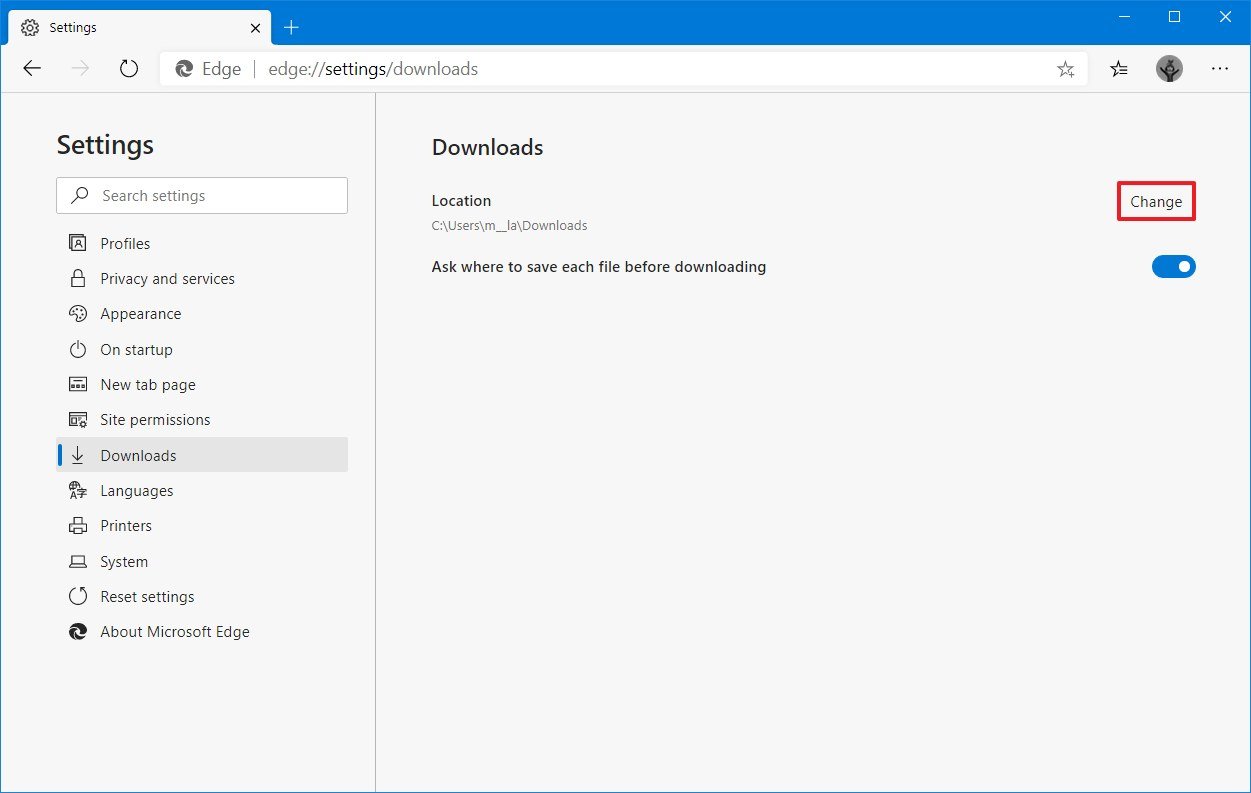 Source: Windows Central
Source: Windows Central - Select the new location for downloads.
- Click the Select Folder button.
Once you complete the steps, future files will download to the new location by default in the new storage.
More Windows 10 resources
For more helpful articles, coverage, and answers to common questions about Windows 10, visit the following resources:
- Windows 10 on Windows Central – All you need to know
- Windows 10 help, tips, and tricks
- Windows 10 forums on Windows Central
We may earn a commission for purchases using our links. Learn more.
How to Move My Documents Folder in Windows 10
Source: https://www.windowscentral.com/how-move-default-user-folders-new-drive-windows-10











0 Response to "How to Move My Documents Folder in Windows 10"
Post a Comment